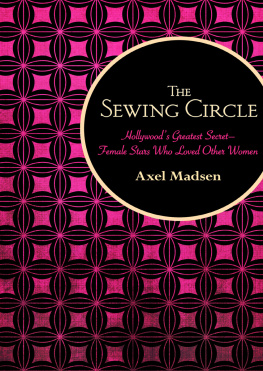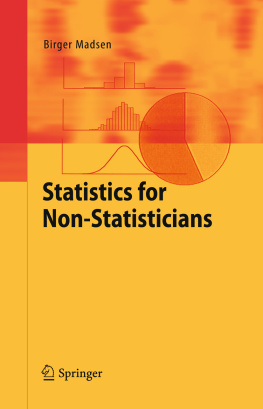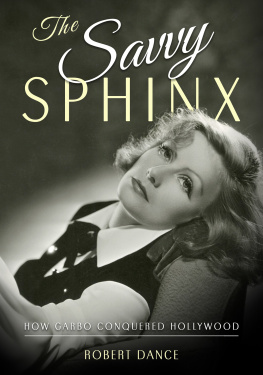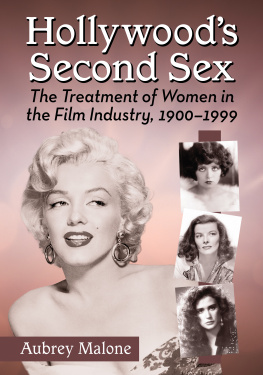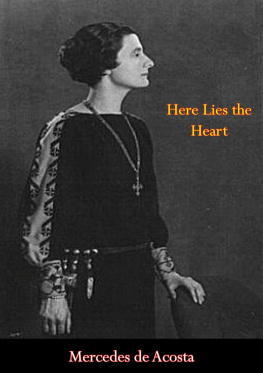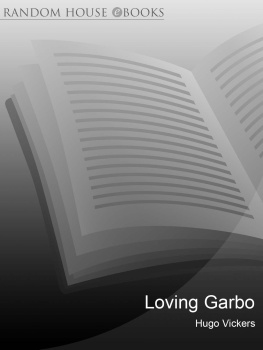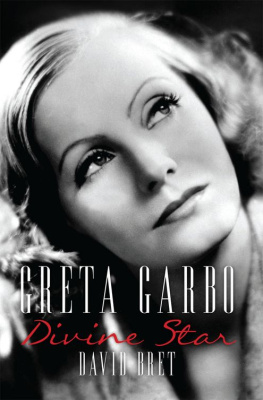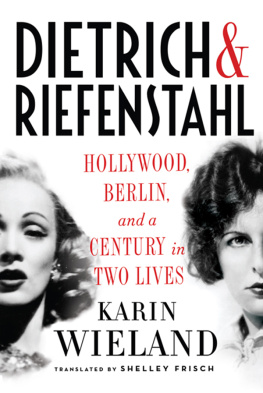The Sewing Circle
Hollywoods Greatest SecretFemale Stars Who Loved Other Women
Axel Madsen
To Dana Henninger
Contents
Membership in the closed society
of the motion picture industry
is almost never revoked
for moral failings.
John Gregory Dunne, Playland
Author to Reader
This is a book about appearances, about denied attachments and emotions, and the mocking of mystery and allure. It is the documented story and affectionate close-up of exalted lives and furtive appetites. When Greta Garbo and Marlene Dietrich had enough of men, artifice, and glamour, they sought solace, strength, and understanding in clandestine feminine friendships. On-screen, they were incarnations of turbid fantasies. Offscreen, they depended on women who loved women, like the poet-playwright Mercedes de Acosta, whose bed they shared in succession. Catholicism and Judaismthe predominant faiths of showbiz peopleare explicitly antagonistic toward same-sex love. The mores of the golden era enforced a two-way secrecy. Not only did lesbians live hidden lives, but the public at large averted its eyes. Nobody wanted to know.
Garbo, Dietrich, Katharine Hepburn, and Barbara Stanwyck cultivated the movies rich territory of sexual ambiguity as insolent, direct, kiss-me-deadly females. On occasion they convinced their studios to let them play menMarlenes dream was to play a man pretending to be a womanand enjoyed the thrill of exposing themselves while hiding inside a character.
The gender codes of the day taught Tallulah Bankhead, Alla Nazimova, and Garbo to think of themselves as having dual natures, one male and one female. They were torn by these seemingly opposite sides and subcribed to the then-current theory that lesbians were men trapped in womens bodies. Garbo believed the part of her which both wanted to succeed and to love women was her male side. The sewing circle was both euphemism, readily denied, and furtive sisterhood of women in love with women. Friendship, the mysterious dynamic that unites people, was, with loyalty and trust, a greater attraction than physical passion.
Sexuality is often just another role, as arbitrary as any part a screen star is asked to play. Fear of discoveryand vanitymeant knowing how to espouse bisexuality long enough to see oneself through an offscreen bed scene. The question of whether Joan Crawford and Myrna LoyGillette blades for cutting both waysloved women and tolerated men is less a matter of evidence than of attitude and affinity. Lesbians lie to men, said Judith Anderson, because they dont want to be rejected, even if there is no sexual attraction. A majority of Hollywoods lesbians enjoyed men as long as they didnt come too close.
Marriage was common. The most famous modern homosexual, Oscar Wilde, was married with children, and Hollywood lesbians sought protection and acceptance in lavender marriages to actors who were often homosexual, and with whom they could form secret alliances against hostile surroundings.
Paramounts premier costume designer Edith Head married Fox art director Wiard Bill Ihnen. Both were always busy, stayed out of each others life, and lived past eighty. Crawford and Stanwycks cracked marriages to alcoholics gave these two former chorus girls a sense of stability, while the safe and sexless marriage of Linda and Cole Porter gave his career dazzle. Laurence Oliviers marriage to Jill Esmond remained unconsummated for years as she struggled to accept her lesbianism. While living with faithful companions, Hepburn, who early on scored in near-andrgynous parts, maintained the perfect front with alcoholic Spencer Tracy, who, as a Catholic, never divorced his wife. The successive marriages of Janet Gaynor, Lili Damita, and Agnes Moorehead were daisy chains of deceit. Other tandem couples included Charles Laughton and Elsa Lanchester, Vincente Minnelli and Judy Garland. When they had to, lavender couples produced children.
For many, liberation had come after marriage. Since leaving their husbands, these women lived a life of travel, cultural pursuits, and leisure for the development of friendship and same-sex attachments. Some never divorced. Dietrichs unorthodox marriage to Rudolph Sieber, who lived thirty-seven years with another woman, had its roots in a 1920s Berlin accustomed to sexual ambivalence. Lili Damita, who found Marlene in a tuxedo irresistible, and Errol Flynn, Stanwyck and Robert Taylor, Berthold and Salka Viertel, were married couples with sexual independence. Unlike many working- and middle-class lesbians, none of these women sought long-term relationships with female lovers. Singles like Garbo, Katharine Hepburn, and Dorothy Arzner, Hollywoods only woman director of the 1930s and early 1940s, lived in a deeper twilight.
The focus here is Hollywoods pinnacle decades, the thirty years stretching from the dawn of the talkies in the late 1920s to the collapse of the studio system and the anticommunist witchhunt, which was so harrowing to nonconformists. In the company of Hollywoods odd girls and twilight lovers, the book will bed-hop to Broadways Maude Adams, Eva Le Gallienne, and Katharine Cornell, to Natalie Barneys sapphic oasis in Paris, and to Londons sewing circles, from Vita Sackville-Wests aristocratic set to Lynn Fontannes high-keyed West End monde.
Society condemned the love that dares not speak its name with such vehemence that Hollywoods lesbians could count on no wink of complicity from the majority of their sex. Women made up the majority in vigilante organizations such as the nonsectarian National League of Decency and, as such, were largely responsible for the 1932 tightening of Hollywoods self-censoring Production Code, which, among other strictures, forbade the depiction of homosexuality in any form.
Emma Goldman and Edith Ellis might have stormed the country for suffrage, womens rights, and, under their breaths, sapphic love, but living openly as a lesbian was fraught with danger, guilt, and anxiety. Most American women barely knew what a lesbian was, and if it was explained to them, they were quick to label such women twisted or, in the new Freudian vocabulary, inverts or degenerates (Russian-born Red Emma, who was considered a monster in polite society and an advocate of free love and bombs, was deported in 1919 as an anarchist). In many communities, female lovers caught in flagrante were institutionalized in insane asylums.
Garbo, Dietrich, Crawford, Stanwyck, Bankhead, Garlandthe roll call of golden-age stars who were lesbian or bisexual may seem especially lengthy compared to what we know of contemporary movie celebrities. Since modern sex researchers agree that homosexuality is probably a constant in human evolution, and that there is neither an increase nor a decrease, proportionally speaking, the answer to why so many stars then were closeted lesbians must be found in the social context. The cinema had barely learned to talk in 1930, and everybody in the movies was youngGarbo was twenty-five, MGMs wunderkind producer Irving Thalberg thirty-one, and founding father D. W. Griffith was fifty-five. The arts and entertainment had always attracted gays, but the movies were a brand-new field. The screen catapulted a few women to unheard-of radiance and sway and gave them influence and opportunities that, with the exception of a few monarchs, no woman had ever had. Because they were the first superstars, Garbo, Dietrich, Crawford et al. seem all the more striking, and they remain, with the exception of Elizabeth Taylor, better known than the 1950s headliners. As for todays stars, who knows what we will find out about them in fifty years?

